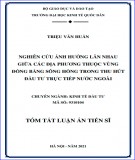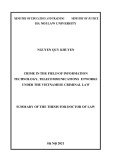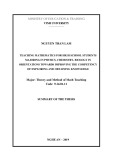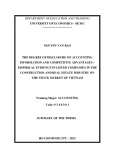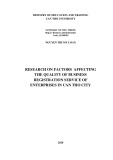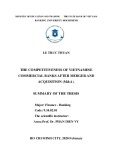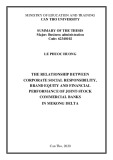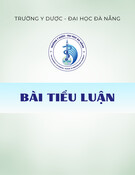
1
INTRODUCTION AND AIMS
Cirrhosis is the common end-stage disease of a variety of chronic
hepatitis. Worldwide, cirrhosis is thought to be the leading cause of
death in the 14th. There are many types of infections that occur in
cirrhosis and spontaneous bacterial peritonitis (SBP) is a severe and
frequent complication. The incidence of SBP in cirrhotic patients with
ascites is hospitalized from 10% -30%. The main causes of viral
hepatitis are Gram-negative bacteria, commonly known as E. coli,
Klebsiella sp., Enterobacter sp., And some Gram-positive bacteria:
Streptococci, Enterococci. Ascites analysis plays an important role,
determining the diagnosis and direction for treatment of SBP. The
diagnosis of SBP is based on the number of neutrophil counts (> 250
cells / mm3) or / and positive bacteriuria. However, the pathogenic
strains of bacterial pathogens are frequently altered, with increasing
antibiotic resistance of bacterial strains, which makes treatment of SBP
more difficult in patients with cirrhosis. In Vietnam, there are not many
studies on SBP.
Targets:
+ Description of clinical characteristics, subclinical disease
Peritonitis infections spontaneously.
+ Results of identification of bacteria and antibiotics on the
isolates of bacteria.
+ Evaluation of the results of treatment of peritonitis infection
spontaneously in patients with cirrhosis.
NEW CONTRIBUTION OF THE THESIS
The thesis has scientific and practical implications, which are
related to many disciplines such as intestinal digestion, infectivity and
microbiology. In clinical practice, the topic describes the main features
of spontaneous abdominal infections in patients with cirrhosis of the
ascites, the pathogenic strains, the antibiotic sensitivity assessment
Bacteria isolates and evaluated the efficacy of the regimen starting with
two antibiotics: Cefotaxime 4g / day + Ciprofloxacin 1g / day, effective
treatment with antibiotics and experience.
STRUCTURE OF THE THESIS
The dissertation has 121 pages, including: research introduction
and objectives (2 pages), overview (36 pages), subjects and methods
(25 pages), research results (27 pages) Comment (29 pages), conclusion
(2 pages). The thesis has 32 tables, 12 charts, 15 images, 189 references
including 9 Vietnamese documents and 180 English documents.






